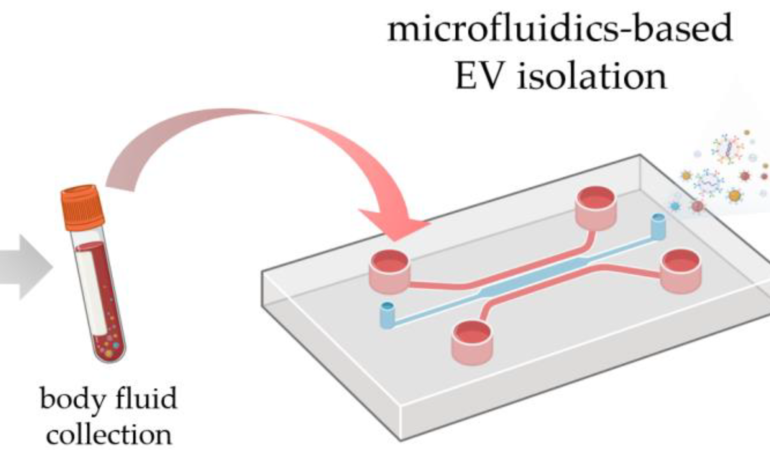
- by Alessio Meggiolaro
- 03/04/2023
Microfluidic Strategies for Extracellular Vesicle Isolation: Towards Clinical Applications
A. Meggiolaro, V. Moccia, P. Brun, M. Pierno, G. Mistura, V. Zappulli, D. Ferraro
Biosensors (2022), 13(1), 50
Abstract
Extracellular vesicles (EVs) are double-layered lipid membrane vesicles released by cells. Currently, EVs are attracting a lot of attention in the biological and medical fields due to their role as natural carriers of proteins, lipids, and nucleic acids. Thus, they can transport useful genomic information from their parental cell through body fluids, promoting cell-to-cell communication even between different organs. Due to their functionality as cargo carriers and their protein expression, they can play an important role as possible diagnostic and prognostic biomarkers in various types of diseases, e.g., cancers, neurodegenerative, and autoimmune diseases. Today, given the invaluable importance of EVs, there are some pivotal challenges to overcome in terms of their isolation. Conventional methods have some limitations: they are influenced by the starting sample, might present low throughput and low purity, and sometimes a lack of reproducibility, being operator dependent. During the past few years, several microfluidic approaches have been proposed to address these issues. In this review, we summarize the most important microfluidic-based devices for EV isolation, highlighting their advantages and disadvantages compared to existing technology, as well as the current state of the art from the perspective of the use of these devices in clinical applications.
